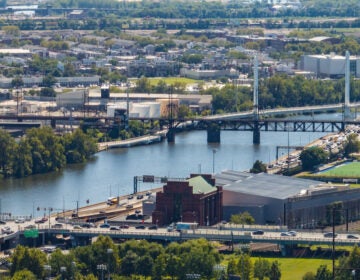Delaware’s nesting piping plovers show resilience in the face of overall declines along the East Coast
Nesting piping plovers show resilience in Delaware while the shorebirds struggle to maintain their population along the southern Atlantic Coast. Researchers want to know why.
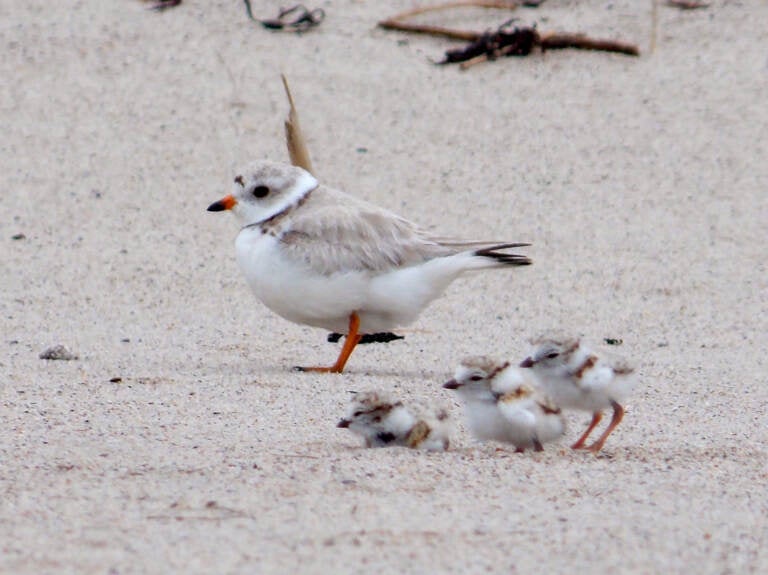
A piping plover and chicks. (Kaiti Titherington/USFWS)
Piping plovers nesting along Delaware’s shoreline produced more fledglings last year than in 2021 — raising 34 chicks to their flying age of 25 days old.
Experts say that’s welcome news, following low numbers in 2021 during which a Nor’easter wiped out some nests, and predation rates increased. Last year also marked the first time the number of breeding pairs in Delaware stabilized. The state is only one of a few areas where the birds bounced back.
Piping plovers have been endangered since the 1980s because of increased public use of the beaches these shorebirds nest on, and because of additional predators. Coastal states have worked to conserve the birds — educating beachgoers, installing fencing and closing some parks during breeding season to protect their habitat. In the mid-1980s, there were fewer than 800 pairs along the Atlantic Coast. Today, there are about 2,000 pairs, distributed unevenly.
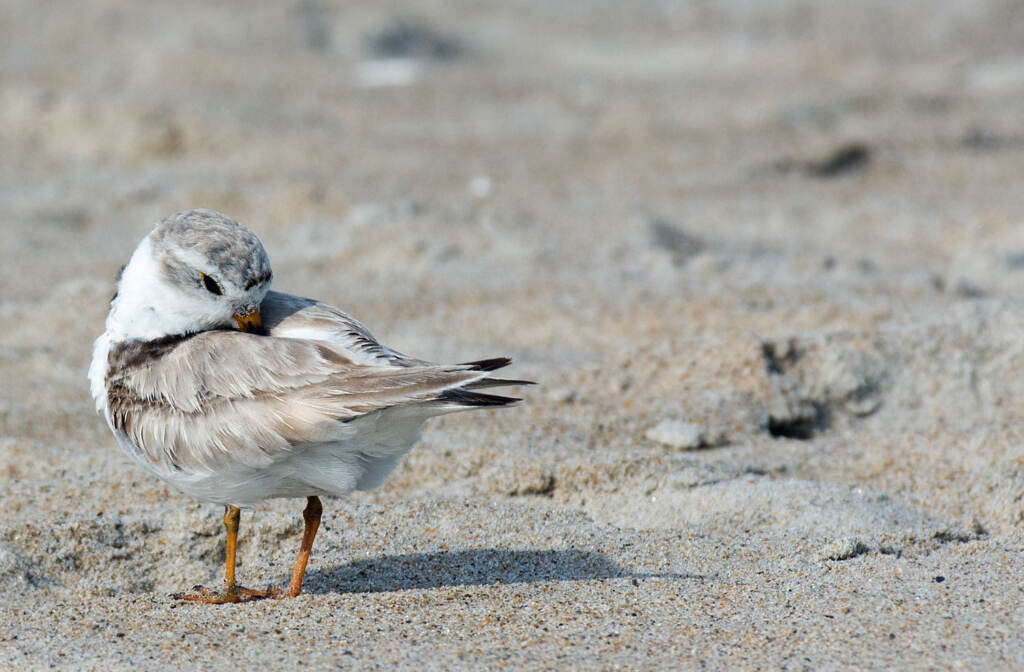
(Matt Poole/USFWS)
However, in 2022, the number of nesting pairs and successful hatches declined in many states along the Atlantic coastline. Delaware, along with New York and New England, stood out for its positive trends.
“Delaware is sort of a little beacon of hope among some less happy news for the population as a whole,” said Anne Hecht, an endangered species biologist with the U.S. Fish and Wildlife Service.
For example, in New Jersey, there was a 14% decline in the number of piping plovers that nested, though still higher than in 2020. The number of birds that successfully hatched at least one nest also dipped from 64% to 59%. More than half of hatching failures in New Jersey were caused by predators, while 10% were caused by flooding and 4% were blown over.
Maryland, Virginia and North Carolina also faced lowered numbers.
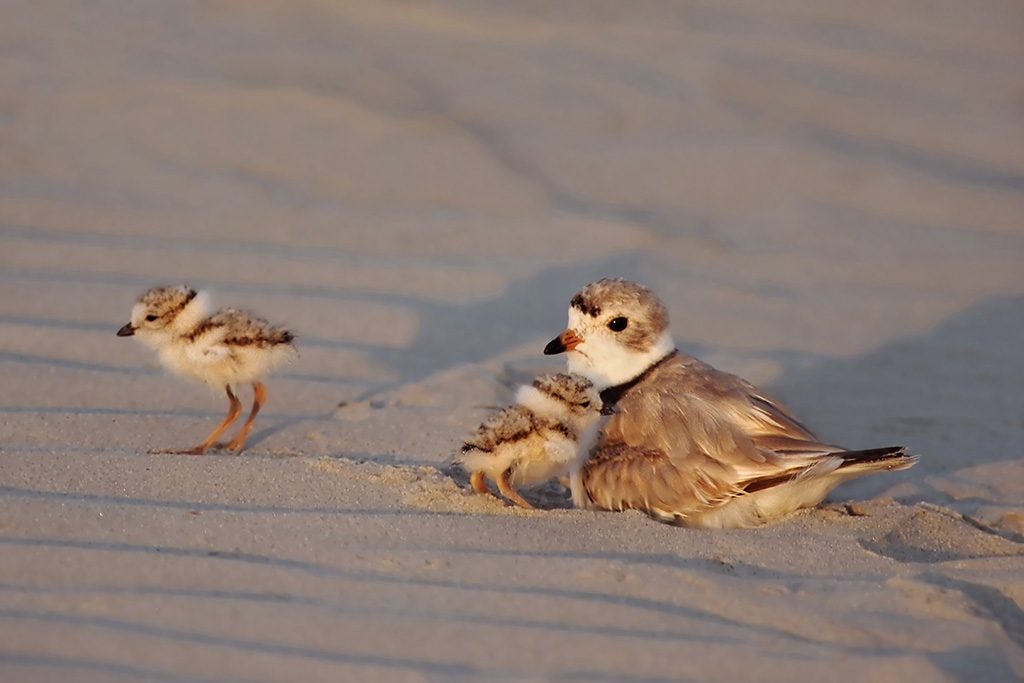
The drop in pairs was not unexpected because it followed poor productivity in 2021, Hecht said. Since piping plover chicks tend to return to the region where they were hatched and fledged, it was predictable there would be a decline in pairs. However, it’s still concerning, she said.
“We are working very, very closely with our partners to sort of focus on this question of, ‘What’s changed?’” Hecht said. “I don’t have a magic bullet, but that doesn’t mean we’re going to give up on working.”
Researchers don’t know with certainty why Delaware fared better than other states in 2022. However, there are theories.
“The Prime Hook National Wildlife Refuge site is pretty unique compared to a lot of our neighboring states, and they were quite sheltered from some of the storm effects of the Nor’easter in May,” said Henrietta Bellman, a coastal avian biologist who oversees piping plover research for Delaware’s Division of Fish & Wildlife.
“That meant they didn’t suffer the same number of nest losses that perhaps the New Jersey coastal beaches may have struggled with. So that’s a possibility.”
Susan Guiteras, who researches piping plovers at Prime Hook National Wildlife Refuge, said she and her colleagues were pleased by the 2022 numbers. She added that it’s more important to focus on long-term trends, because they’re “a reflection of things that we may have control over, like habitat management, managing pressure from public uses and that kind of thing.”
In addition to habitat conservation, researchers in Delaware also are banding the birds to monitor the proportion that return to the state, and whether new birds immigrate from other states.
“That project hopefully will be really useful in illuminating a little bit more information about our specific population, and how we can potentially improve habitat and work with other states to continue to conserve the species,” Bellman said.
She believes Delawareans should take pride in the improvements that have been made among the piping plover population, and take the time to understand the importance of conversation.
“They also serve as a symbol for coastal systems in general … It’s not just plovers that exist there — there’s also other breeding birds, and there’s also threatened endangered plant species that exist in these systems that really depend on having sandy shorelines,” Bellman said. “I think they’re beautiful and wonderful in their own right, but they also represent a whole ecosystem that’s unfortunately degraded a lot along the Atlantic Coast.”
WHYY is your source for fact-based, in-depth journalism and information. As a nonprofit organization, we rely on financial support from readers like you. Please give today.



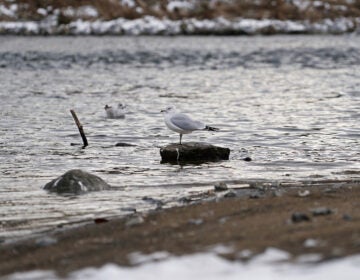
![IMG_0594[86] Researchers explain oyster recruitment and predation trials at field site. (Kurt Gust, ERDC)](https://whyy.org/wp-content/uploads/2022/11/IMG_059486-360x280.jpg)

